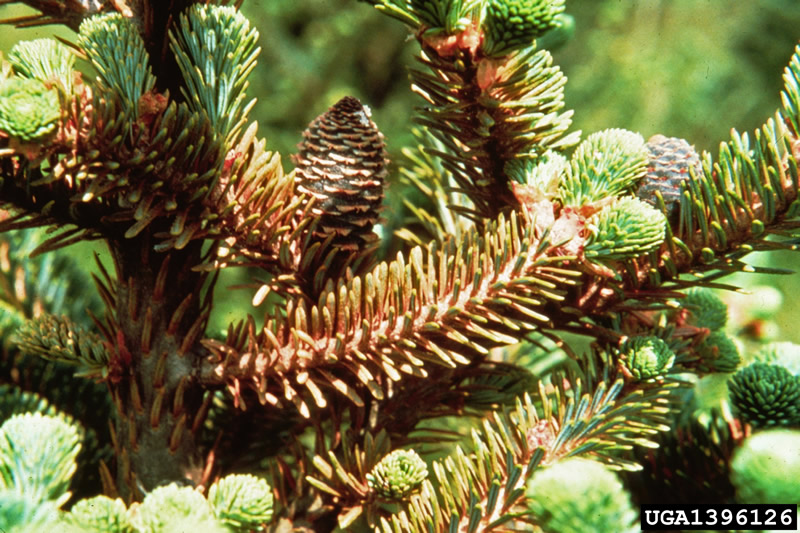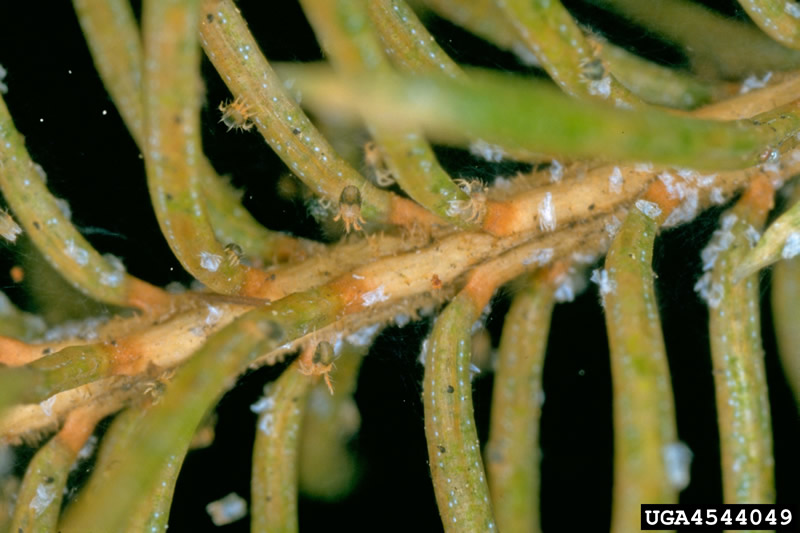Issue 1, April 22, 2021
Spruce spidermites

(Spruce spider mite (Oligonychus ununguis) USDA Forest Service - Northeastern Area, USDA Forest Service, Bugwood.org)
Spruce spidermite (Oligonychus ununguis) is a herbivorous mite that feeds on spruce, fir, juniper and other conifers. These mites suck plant fluids from conifer needles. Each time a mite pierces the plant, it leaves behind a small discolored spot. When many mites feed on the plant, the needles can quickly become covered in small yellow spots, described as “stippling.” This can give the injured plant a bronze appearance at a distance. Fine silk may also be visible among the needles and twigs.
Spruce spidermites feed and cause injury in the spring and fall, when the weather is cooler. This can help you identify which spidermite species is causing the injury; if the injury occurs during the hottest part of the year, it is not caused by spruce spidermite.

(Spruce spider mite (Oligonychus ununguis) Petr Kapitola, Central Institute for Supervising and Testing in Agriculture, Bugwood.org)
When scouting for mites, it’s important to identify whether you have predatory or herbivorous mites before applying a treatment. The easiest way to do this is to collect mites onto a sheet of paper and inspect them.
Hold a piece of white paper under a branch and hit the branch with a rake handle. This should knock the mites onto the paper, where they can be seen more easily. Red mites are predatory mites that feed on herbivorous mites. If you find many red mites, don’t apply a treatment because it will kill the predators. Green mites are herbivorous mites, feeding on the plant. If you find many green mites and have significant injury, you can apply a treatment to control them. The treatment must be applied when mites are active and present on the tree.
When controlling mites, be sure that mites are indicated on the pesticide label, because products labeled for insects may not work on mites. Some treatment options include: acequinocyl (Shuttle), bifenthrin (Onyx, Talstar), fenazaquin (Magus), spiromesifen (Forbid), insecticidal soap and summer oil.
Author:
Sarah Hughson